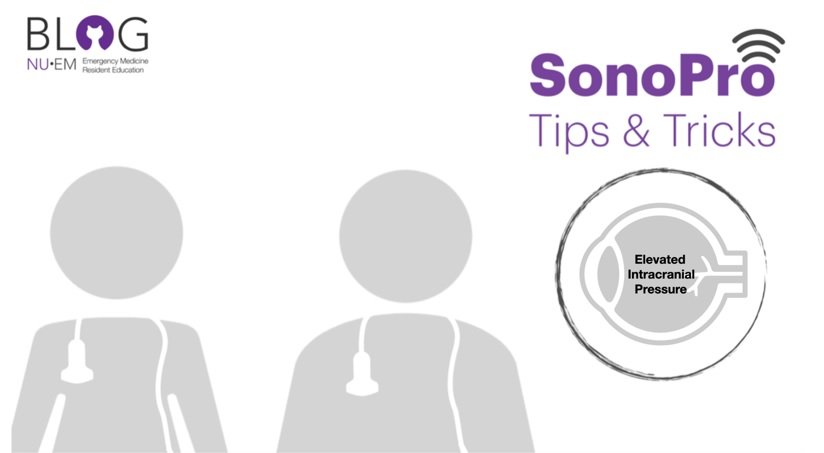Written by: Courtney Premer-Barragan (NUEM ’25) Edited by: Peter Serina, MD (NUEM ’22)
Expert Commentary by: John Bailitz, MD
Welcome to the NUEM SonoPro Tips and Tricks Series where Local and National Sono Experts team up to take you scanning from good to great for a particular diagnosis or procedure.
For those new to the probe, we recommend first reviewing the basics in the incredible FOAMed Introduction to Bedside Ultrasound Book, 5 Minute Sono, and POCUS Atlas. Once you’ve got the basics beat, then read on to learn how to start scanning like a Pro!
Did You Know?
Did you know that ultrasound-guided peripheral intravenous line (USPIV) is significantly more successful than blind EJ placement and furthermore can help decrease the need for central venous placement (1-4)?
Need access stat, but unable to get that peripheral IV or EJ, bring out the US!
Difficult stick, dehydrated patient, collapsible veins, USPIV is calling your name!
To take your Sono Skills to the next level, read on:
SonoPro Tips- How to Scan like a Pro
It’s all about the basics
Anatomy
Basilic is usually the easiest target regardless of patient habitus and is free and clear of nerves and arteries
Remember, veins are compressible, arteries are pulsatile, nerves have a honeycomb appearance
Positioning, positioning, positioning!
Make sure the patients’ bed height relative to your position is comfortable and natural. You shouldn’t be bending awkwardly down or turning in strange positions to get to that arm. It can be helpful to do this procedure sitting.
Make sure the ultrasound screen is positioned in a way that you are not turning or leaning awkwardly to visualize your field
When just starting out, it may be difficult to identify the vein location in relation to where your needle is entering. Let the center line be your friend and turn on that feature to guide your aim!
Hold the probe like a Pro!
Understanding the ultrasound image in relation to your probe is fundamental to any ultrasound procedure!
In order to effectively visualize your needle, the probe should be perpendicular to the needle. When you can’t see your needle, ask yourself, is my probe actually perpendicular to what I’m looking for?
Common pitfall: entering the needle into the skin and losing the needle/needle tip.
Remember: adjust the angle of the probe, i.e. tilting it, so that it is perpendicular to the needle.
Practice holding the needle still when moving the ultrasound. Then holding the ultrasound still when moving the needle. Coordination is key and can be very awkward when starting out.
Remember to pay attention to how much pressure you are applying with the ultrasound. Veins are collapsible, don’t make your target harder to hit! Light pressure is all you need to get a crisp image. Practice stabilizing your hand with the patient’s arm
Image adopted from (5): http://pie.med.utoronto.ca/OBAnesthesia/OBAnesthesia_content/OBA_needling_module.html
How the Pros find that needle tip:
Slightly wiggle up and down to reflect the tissue around the needle. Remember, with ultrasound small, minute movements translate into big effects, no swinging the needle!
Found the needle, but have no idea where the actual tip is? Scan the needle back and forth, starting from a place where you’re confident you see it, and then tracing it down until you lose it. You’ve found your tip when you hit that sweet spot of seeing the needle and then watching it disappear.
What the Pros do Next:
So you’ve gotten your needle through the skin, you’ve visualized the tip, how do you get to that target?
Go to the tip of your needle and slide the probe further down so you lose the tip, then move the needle until it comes into view on the screen. Again, small movements=big money. Keep chasing the needle down, sliding the probe down, then inching the needle down, until you tent the vein.
Now you’re tenting the top of the vein, give the needle a little more pressure until you break through the wall of the vessel. Don’t panic if you’ve gone too far, simply pull the needle back until you see your tip in the center of the vessel!
Success!! Not so fast, before celebrating that needle beautifully placed in the center, keep chasing the needle through the vessel to ensure it’s in. No need to pay attention to red flash, trust the ultrasound. Once you’ve chased that needle along, then thread the catheter in and remove the needle.
Attach a flush to ensure the vein and catheter is functioning well. Attach the rest of the IV set up. Now celebrate, you’ve successfully nailed that procedure!
SonoPro Tips - Where to Learn More
Ultrasound Transducer Manipulation video: https://www.youtube.com/watch?v=RskrEsAGzec
CoreEM Ultrasound Guided Peripheral IV Placement video: https://www.youtube.com/watch?v=IbSnhsTxKDA
Ultrasound: Basic understand and learning the language, Ihnatsenka et al. (6): https://www.ncbi.nlm.nih.gov/pmc/articles/PMC3063344/
The Two-Axis Technique for US-Guided Vascular Access: https://www.coreultrasound.com/5msblog-2-axis/
References
1. Costantino TG, Kirtz JF, Satz WA. Ultrasound-guided peripheral venous access vs. the external jugular vein as the initial approach to the patient with difficult vascular access. J Emerg Med. 2010;39(4):462-467. doi:10.1016/j.jemermed.2009.02.004
2. Au AK, Rotte MJ, Grzybowski RJ, Ku BS, Fields JM. Decrease in central venous catheter placement due to use of ultrasound guidance for peripheral intravenous catheters. Am J Emerg Med. 2012;30(9):1950-1954. doi:10.1016/j.ajem.2012.04.016
3. Bahl A, Pandurangadu AV, Tucker J, Bagan M. A randomized controlled trial assessing the use of ultrasound for nurse-performed IV placement in difficult access ED patients. Am J Emerg Med. 2016;34(10):1950-1954. doi:10.1016/j.ajem.2016.06.098
4. Dargin JM, Rebholz CM, Lowenstein RA, Mitchell PM, Feldman JA. Ultrasonography-guided peripheral intravenous catheter survival in ED patients with difficult access. Am J Emerg Med. 2010;28(1):1-7. doi:10.1016/j.ajem.2008.09.001
5. Arzola C, Balki M, Carvalho J et al. Needling Techniques. Mount Sinai Hospital Department of Anesthesia Perioperative Interactive Education. http://pie.med.utoronto.ca/OBAnesthesia/OBAnesthesia_content/OBA_needling_module.html
6. Ihnatsenka, B., & Boezaart, A. P. (2010). Ultrasound: Basic understanding and learning the language. International journal of shoulder surgery, 4(3), 55. doi: 0.4103/0973-6042.76960
Expert Commentary
Thank you, Courtney and Peter, for this great new SonoPro post - another great next-level review. For the clinician really looking to take their difficult IV access POCUS skills from good to great, I always recommend pre-scanning in both the short axis as well as the long axis to fully understand the anatomy and identify the best site for insertion. Next, carefully insert the needle in the short axis, as Courtney wonderfully describes. Lastly, confirm that the catheter is fully in the vein by turning the probe quickly back to the long axis. In my experience, this extra step prevents you from needing to do the procedure again when the IV infiltrates shortly after insertion. Check out the last reference to learn more - happy scanning everyone!
John Bailitz, MD
Vice Chair for Academics, Department of Emergency Medicine
Professor of Emergency Medicine, Feinberg School of Medicine
Northwestern Memorial Hospital
How To Cite This Post:
[Peer-Reviewed, Web Publication] Premer-Barragan, C., Serina, P. (2025, Mar 27). Sono Pro Tips and Tricks for Peripheral IV Access. [NUEM Blog. Expert Commentary by Bailitz, J]. Retrieved from http://www.nuemblog.com/blog/sonopro-tips-and-tricks-for-peripheral-IV-access


















